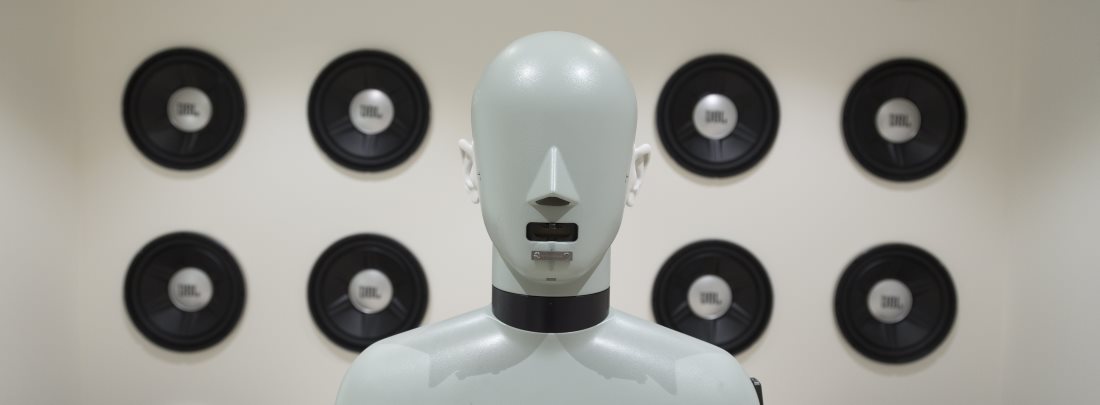It is hard to tell when horns first were used. They have been in use for thousands of years as instruments, and man must early have discovered the amplifying effect of a pair of cupped hands in front of his mouth, or behind his ears. Ear trumpets were early implementations of this, and the first hearing aids.
Horns were used on phonographs and gramophones from the start. This was the only way to get the required volume from the tiny motions of the needle. The theoretical understanding of horns was still small though, and most of the work was experimental. Early models used conical horns, but as theory progressed, the superiority of the exponential horn was recognized.

Actually, the theoretical foundations of horn theory were in place, but not recognized at the time. The equation that governs sound propagation in horns, also governs propagation in strings where the mass varies along its length, and non-uniform transmission lines, for example. Much work was done on this kind of equations in the 18th century by Euler, Bernoulli and Lagrange, but after that, little happened until the 20th century. It was not until Rayleigh in 1916, and Webster in 1919 published their papers, that the real progress started. At about the same time, in 1915, Jensen and Pridham, as told in a previous part, connected a 22-inch horn from an Edison Amberola to their telephone receiver, and was able to transmit speech that was heard two blocks away.
With the advent of tube amplifiers and good microphones, Western Electric launched their public address system. In 1916 they had a system capable of addressing 12000 people through 18 moving armature loudspeakers. In 1919, a distributed system with 113 balanced armature loudspeakers were set up along New York City’s Park Avenue “Victory Way”. The 1920 Chicago Republican Convention was the first successful indoor use of a public address system. In March 1921, president Harding’s inauguration was amplified, and his address in Arlington, Virginia, in November the same year, was transmitted to Madison Square Garden in New York, the adjoining park, and the Civic Auditorium in San Francisco. For the first time, 150000 people could listen to one person speak.
The papers by Rayleigh and Webster came as a very timely contribution to the art. Before that time, the actual working of the horn was not understood, and it was referred to as an amplifier or resonator, or other vague names. Still, little appeared in the literature on the subject the first years after the publications. Stewart used Webster’s equations in his studies of the performance of conical horns in 1920, but perhaps the best known paper dealing with horn theory is perhaps the classical paper by Hanna and Slepian in 1924. They both worked for the Westinghouse Electrical and Manufacturing Co., and their paper has a good discussion of horn theory, especially exponential horns, mouth size, and flare rate, and how to match the horn to a loudspeaker to obtain the desired response. Hanna and Slepian filed their horn patent in 1924.
It is perhaps less known that similar work was undertaken by Western Electric, and patents by Harrison in 1923 and Flanders in 1924 show a clear understanding of the exponential horn and mouth termination. The patents are good summaries of basic horn theory, and also show that it was known that the wave fronts in the horn are not plane but curved. A method to design a horn based on curved wave fronts with exponentially increasing area is described.
The same year, in 1924, an extensive theoretical and practical study of horns performed by Goldsmith and Minton of RCA, was published. Building on Webster’s work, they analyzed the performance of a large number of horns, using both theory and measurements. Their charts give limited information to the modern reader, however, since they use linear scales both for pressure and frequency. This, combined with seemingly poor understanding of how large the mouth had to be to avoid reflections, and of the directional characteristics of the horns, seems to have led them to erroneous conclusions on what would be the optimum horn length and mouth size. Their analysis also included the throat impedance for parabolic horns, but due to the wrong choice of basis functions the analysis showed that the horn would have pressure and volume velocity 90 degrees out of phase at all frequencies.




